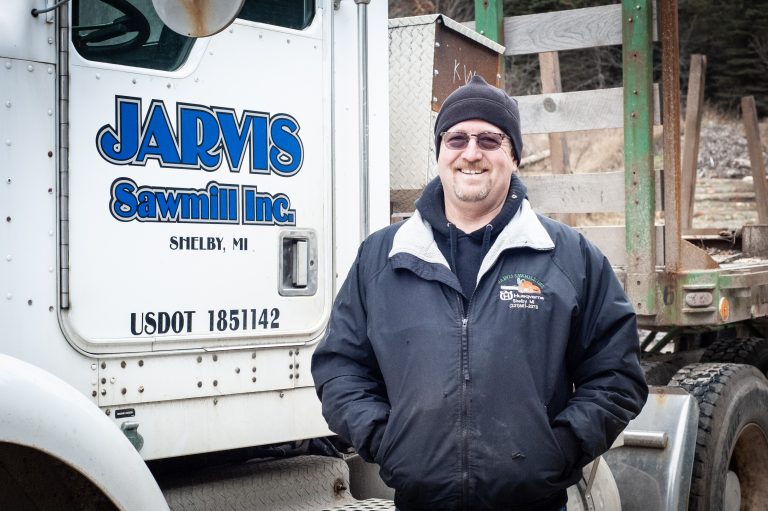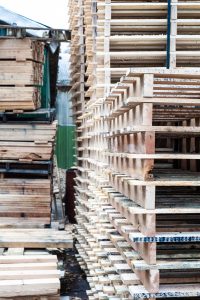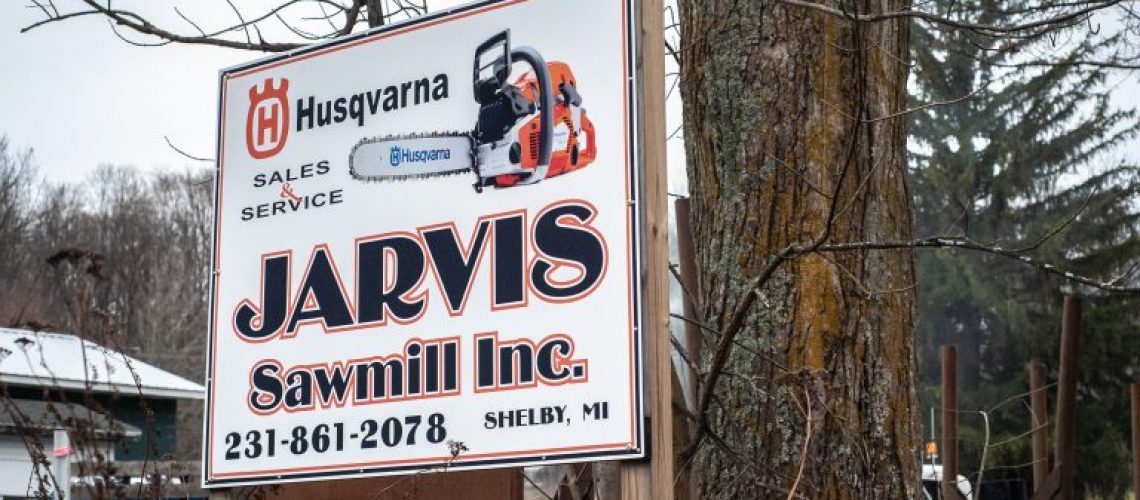Commercial sawmills are energy intensive—in more ways than one.
They require lots of power to run all the equipment needed: the mill itself, chippers, air compressors, debarkers, rip-saws, planers, to name some.
 But what they need the most of is people power. The people behind the equipment, out in the woods logging, meeting landowners to discuss sustainable tree removal, and trying to build sales for the sawmill are the REAL power source for a successful sawmill operation.
But what they need the most of is people power. The people behind the equipment, out in the woods logging, meeting landowners to discuss sustainable tree removal, and trying to build sales for the sawmill are the REAL power source for a successful sawmill operation.
Bob Mayo, GLE member and owner/operator of Jarvis Sawmill in Shelby, readily acknowledges that.
Mayo came to the sawmill business from a construction background in the early 1980s, hired by the late Dale Jarvis, who started Jarvis Sawmill in the 1960s with his father.
“I thought I’d give it a try,” Mayo remembers, since he was no stranger to hard work and enjoyed being outdoors.
Almost 40 years later, Mayo now owns the mill after becoming Jarvis’ business partner and buying the property where the mill was located. He learned over the years to do nearly every job the mill required, including running the mill and head saw.
These days, Jarvis Sawmill provides products and services such as pallets, furniture grade lumber, flooring/barn lumber, landscape bark and woodchips, sawdust, logging and timber buying. The sawmill is also a Husqvarna chainsaw sales and service dealer.
And business is good, Mayo reports. Sometimes demand for certain products in the agricultural-heavy Oceana County, such as apple boxes, even makes it advantageous to work with another local business, Schmieding Sawmill, to efficiently produce the quantity of apple boxes needed.
 “We cut the wood,” Mayo explains, “and they nail the boxes together.”
“We cut the wood,” Mayo explains, “and they nail the boxes together.”
Capital Credits from GLE
Since the mill is on GLE lines, they receive capital credit refunds. The refunds, Mayo says, give him an appreciation of what it means to be a co-op member.
“I like the people-owned concept,” he states. He generally uses the mill’s capital credit refund to pay toward his next electric bill.
“It’s like a bonus,” he observes, and one he knows that sawmills not served by an electric cooperative don’t receive.
Community and Future Workforce
He also appreciates GLE’s community involvement, which he recognizes as an important aspect of his own business.
“Being a business owner makes you realize that it’s important to help make your community stronger so it’s a place that people want to live and work,” he notes.
Mayo is a member of the Shelby Optimist Club and helps the local Goodfellows organization with fundraising.


He’s also a member of the Michigan Association of Timbermen. Among other activities, the group works to generate interest at the high school level in becoming part of tomorrow’s sawmill operations labor force. Mayo notes that, while working at a sawmill is still hard work, modern sawmill equipment is now computerized, and sawmill work often requires sophisticated math skills to calculate the most efficient cuts and minimize waste.
Cultivating future employees is critical to the “people power” needed to conscientiously harvest timber and meet growing and future demand for all the agricultural, commercial, and residential wood products needed. Jarvis Sawmill is all in on that.


